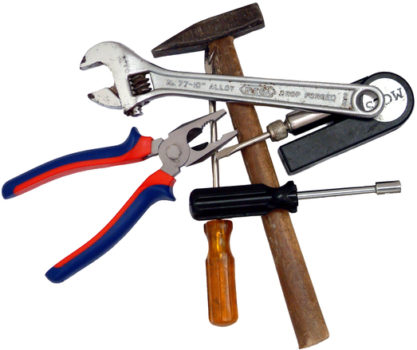Singapore Startup Touts Single Digital Ad Platform

Amid a flurry of ad tools in the market today, few provide what marketers need in a single platform; and this is where one Singapore-based ad tech firm says it is stepping in to fill the gap.
AdAsia Holdings was formally established earlier this year with the aim to offer one integrated platform from which advertisers can develop, monitor, and manage all their campaigns and programmatic media buys. Its CEO and co-founder Kosuke Sogo (pictured below) says every tool the company builds will be integrated with its flagship offering, AdAsia Digital Platform, providing marketers the ability to build creatives and track their ad performance all on the same platform.
The startup currently has more than 30 customers worldwide and a headcount of 30 in its two offices in Singapore and Bangkok. This will climb to 60 employees by end-2016, according to Sogo, who adds that the company is targeting to grow its current pool of Asian publishers connected to its ad network.
In this Q&A with ExchangeWire, he explains why marketers still are hesitant about tapping automation tools for their campaigns and discusses his plans for AdAsia over the next couple of years.
ExchangeWire: There has been a lot of talk about automation; but advertisers today remain uncertain about integrating such tools into their campaigns and are unsure if it will really work as it should. Why do you think that is so? Are automation tools inadequate?

Kosuke Sogo, CEO and Co-Founder, AdAsia Holdings
Kosuke Sogo: We've noticed a recurring theme from our conversations with advertisers and marketers in the region – that there is a lack of education and time spent to understand these tools. Marketers understand the benefits of programmatic, but many do not understand how to use it.
Automation tools are more than adequate for the functions they serve. This is a congested industry with players that continue to innovate and improve to gain a competitive advantage.
The perception that automation tools are inadequate may be the result of marketers feeling these tools do not fulfil all their needs. This is a gap we're looking to address by working with the best players in the industry to present a single and easy-to-use platform for marketers.
Mobile is increasing a priority for many brands today. What are Asia-Pacific marketers getting wrong about their mobile campaigns and/or understanding of what mobile marketing entails?
The beauty of mobile advertising is the ability to reach users based on their location. Geo-targeting can be a very useful tool in enhancing a mobile strategy, if used the right way. At the same time, there are two commonly used mobile ad vehicles: the mobile browser and in-app advertising.
The key then lies in combining both vehicles to produce a comprehensive mobile strategy. In-app ads should be tapped to raise brand awareness; and, because mobile browsers allow for a variety of ad formats, marketers can use these to build further engagement and brand storytelling that can drive conversions.
However, mobile obviously is just one of many channels available; and for a campaign to fully work, an omni-channel approach has to be adopted.
Vendors, agencies, publishers, and advertisers – which would you say is the weakest link in the ad-tech ecosystem today? And how can this be addressed?
There is no weakest link, per se, as all parties are still finding their feet in this fast-changing landscape, especially in Asia. Advertisers still require more in-depth knowledge of how these tools work and can then build their marketing strategies around it.
The advertiser-agency-vendor relationship requires a greater level of transparency regarding where exactly marketing dollars are being spent. The industry is also still combatting ad fraud and it is imperative that publishers take the lead on this.
At a recent conference, it was noted that marketers in APAC today still lacked confidence in programmatic. Why do you think this mistrust persists and what needs to happen to change this?
Let's take a look at the publisher verification situation, for instance, in which the industry has reacted with more aggressive verification measures. Programmatic is still a considerably young industry so, similar to the rollout of any new operating system or device, there will be issues. The industry has so far reacted well to every issue that has arisen, putting in place measures to minimise future risks.
The responsibility now lies with the industry players to ensure marketers are aware of the remedies and that their needs are met.
AdAsia is a young startup. Why did you choose Singapore as your headquarters instead of Tokyo, where the leadership team is from? Isn't Japan's programmatic market one of the more matured ones in this region?
Singapore is the regional hub for a good number of international businesses and advertising technology players; but the majority in Southeast Asia are still coming to terms with programmatic. We see room for further growth in the digital marketing industry here and the region, tapping the country's business infrastructure and accessibility to the region, and use it as a base to expand across Southeast Asia and Asia.
Also, Singapore provides us with an unrivalled platform to access either innovative regional and international companies or open to innovation, which enables us to continuously enhance the AdAsia Digital Platform.
Japan is still an important market to us; but, due to the reasons listed above, we decided to establish our headquarters in Singapore.
You opened your second office Bangkok in May. Why Thailand?
The digital marketing and advertising scene in Thailand is fast evolving and clients there require a good level of on-the-ground support for their marketing needs. The majority of advertising dollars in Thailand still lie in traditional advertising; but that will soon change.
Being at the cusp of programmatic adoption in Thailand gives us the opportunity to advocate programmatic in a market previously seen as a laggard.
In addition, online Thai publishers are looking to hop on to the programmatic bandwagon; and we have a unique opportunity to reach them at an earlier stage. The market for digital television advertising is also expected to rapidly rise.
You're also targeting to expand into Hong Kong, Vietnam, Japan, China, Indonesia, and Malaysia by year-end. Why these markets and how are your plans coming along?
We are looking to enter Vietnam, Indonesia, Hong Kong, Taiwan, and Japan by the end of this year, followed by China, India, Philippines, and Malaysia in 2017. Markets like Vietnam, Indonesia, Hong Kong, and Taiwan are adopting programmatic at a fast rate. Similar to Thailand, we want to enter these markets with a solution that helps marketers easily understand programmatic buying. At the same time, we want to address their needs throughout the advertising process, from creative production to ad placement.
Although Japan's programmatic market is seen as comparatively mature, we have the opportunity to offer our clients access to premium inventory across Asia. We also believe there is still room to gain market share in Japan through our Digital Platform. This extends across the buy- and sell-side functions of the platform and other innovations we plan to roll out.
And, with China often seen as a closed market due to players like Tencent, Alibaba and Baidu, we are looking to integrate their solutions into the AdAsia Digital Platform and enhance it with our own innovations.
What challenges do you foresee in addressing each of these markets?
The biggest challenge is the amount of localisation needed in each market. Asia is a boiling pot of cultures, and Southeast Asia itself has diverse media consumption and engagement habits. We try to address this by ensuring we have local support in each market we enter, with people who understand their local ad market and client needs.
What are some key components missing in most digital ad platforms in the market today?
There are many platforms and tools in the market today; but not one addresses all the needs of advertisers and marketers in a single platform, allowing for consolidated reporting and tracking of spend.
For example, a marketer uses a creative agency to develop banner ads for a campaign. He then goes to a talent agency to find actors and a video production company to develop a 30-second television ad. The marketer finally approaches a media agency to place the banner and video ads across multiple channels, and receives regular reports throughout the campaign.
We're trying to address this need through the AdAsia Digital Platform.
You're aiming for a seat on NASDAQ, or Japan's stock market, within three years. What are your KPIs or milestones that will determine you're ready to be listed? And how do you plan to achieve these?
These will be measured through revenue and profit. Our target is to hit USD$10m (£7.72m) in revenue this year, and USD$20m (£15.44m) in 2017. In 2018, we're targeting to hit USD$50m (£38.6m) and to get listed. We are already seeing growing returns from the AdAsia Digital Platform, AdAsia Ad Network, Private Marketplace, and premium inventory.
Ad NetworkAdvertiserAPACDigital MarketingMedia SpendMobileProgrammaticPublisherSingapore








Follow ExchangeWire